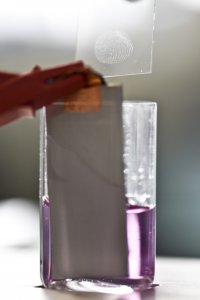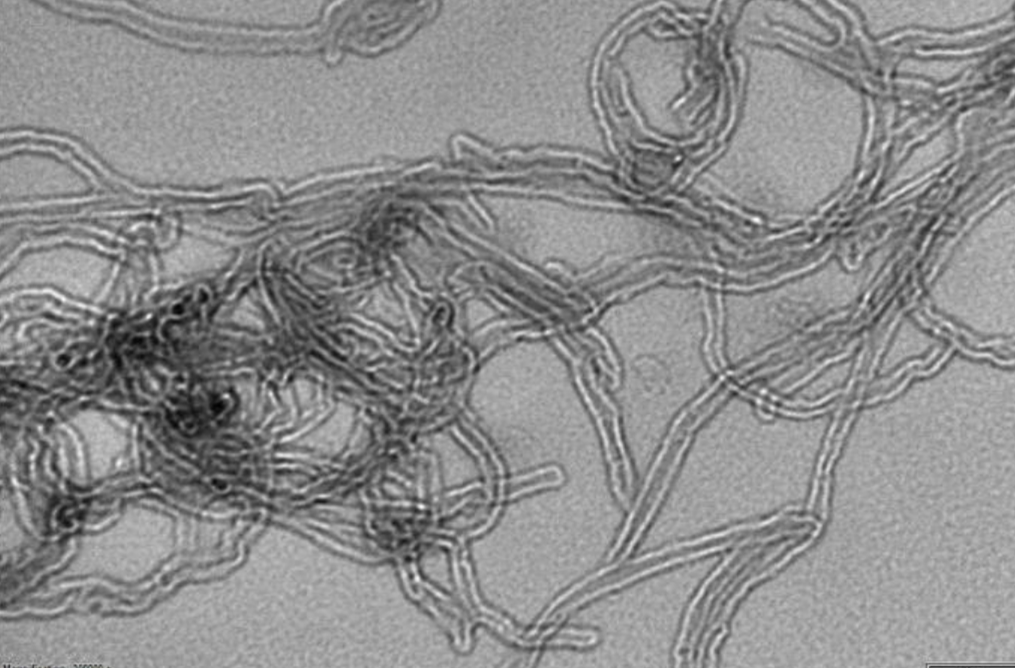 Electrochemistry research at the University of Southampton covers all types of reactions involving electrons moving at surfaces. These reactions are important for many aspects of daily life. Our research ranges from environmental issues such as water treatment and provision of clean energy, to new materials for electronics, to biology and medical sensors.
Electrochemistry research at the University of Southampton covers all types of reactions involving electrons moving at surfaces. These reactions are important for many aspects of daily life. Our research ranges from environmental issues such as water treatment and provision of clean energy, to new materials for electronics, to biology and medical sensors.
ADEPT – Electrodeposition for novel devices
Research on making devices in a new way is carried out by a team of scientists and engineers, using state of the art facilities. They work at the universities of Southampton, Nottingham and Warwick. The team has been brought together to work on improving the making of nano-sized electronics. One of the ways this is being done is by developing new ways to make materials. Some of the advantages of doing this electrochemically is to reduce the amount of waste. Electronics are often made with rare or toxic metals, so this is very important.
Professor Phil leads this work (and a bunch of other projects). Listen to Professor Phil describe why he started in electrochemistry and his own research and what he thinks electrochemistry will be used for in the future.
We use electrodeposition to create materials for applications such as ‘phase change’ memory (making the memory in phones and computers use less energy), infrared sensing, and ‘thermoelectric generation’ (making electricity from waste heat). Our nano-things making scientists use the cleanroom at the Zepler Institute to create patterned templates. This is so our chemists can deposit materials in precise locations on our devices. This technique is similar to the gold fingerprinting activity demonstrated in the Electrochemical Circus, where participants use the naturally occurring oils on their fingers to template gold deposition.
Download our transistor worksheet in the resources section for more information.
See the project on our web pages.
Meet the Professor: Phil
New materials for batteries
In batteries, the amount of ions that can be stored depends on the structure of the materials. We are doing work to create new structures. As well as ones that store loads of ions, we want ones that are able to give up and accept charges quickly. This could be useful for things like regenerative breaking in an electric car (where the energy used in breaking is stored for acceleration later).
Like Teflon on a flying pan, it might also be useful to coat battery materials in something tough, so they last longer. Ceramic materials (like plates) are actually some of the toughest around but coating a thin layer of them can be extremely tricky. Using special ions in solution can make these very tough layers to protect battery materials.
Meet the Professor: Andrew
Aluminium-sulfur batteries

Imagine if we could make batteries from materials that are some of the most widely produced elements on Earth? 4th in this position is sulfur, with a production of 70 million tonnes a year and 5th is aluminium. The aluminium-sulfur battery could provide a voltage around 2V, lower than a lithium based cell, but at a lower cost. There could also be other advantages like increased safety, lower price and the abundance of the materials worldwide.
Meet the Professor: Nuria
Modelling sensors with equations

In a diabetes sensor, glucose in blood flows past an electrode which oxidises the sugar with an enzyme The amount oxidised is measured by measuring the current that passes. But depth of blood is being measured and what impact does this have on the amount of sugar oxidised? What about other factors like time, temperature, the speed of flow, the thickness of the liquid and how fast things can react on the surface? How do you know if it is a reliable result? These kinds of problems can be modeled mathematically, to understand how sensors respond better and also make better electrodes.
Meet the Professor: Guy
Breaking Water
What if you could split water into hydrogen using a lot less energy? We could have a fuel more than twice as energy dense as diesel and that only produces pure water when it burns. But how do you know if your new catalyst is better than your old one? The surprising answer is that you fire powerful x-rays at it. X-rays bounce off the materials and give a unique pattern and using some chemistry know-how you can figure out what it will be like as a catalyst. Electrochemistry with spectroscopy is then used to see how water reacts on the surface.
Meet the Professor: Andrea
Implosions of bubbles
Do you remember bubble painting as a small child? Those bubbles impacted the paper and collapsed, leaving the paint behind. You were providing the bubbles by blowing air through a straw, but small and powerful bubbles can be generated by ultrasonic waves (sound). You might know how ultrasound is used to find the bottom of the sea, or submarines, but it is useful in the lab too. In electrochemistry, you often need things to be really clean, and ultrasonic cleaning is the way to go. At Southampton, we are trying to understand the process of how ultrasound creates bubbles and how they collapse and the impact that has on a surface. Ultrasound studies can be used in the detection of nanoparticles that we don’t want in our drinking water (watch the video below about electrochemistry and your socks) and better electrodeposited coatings.
Meet the Professor: Peter
